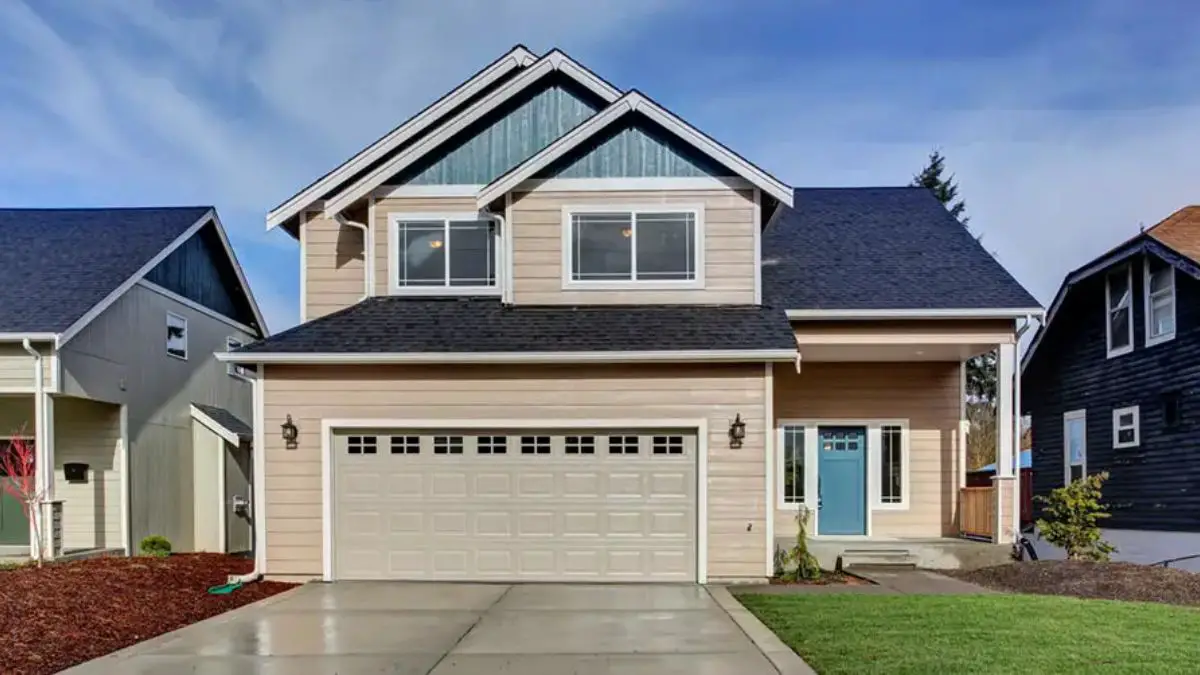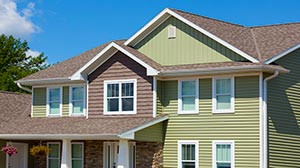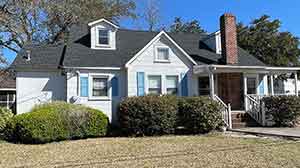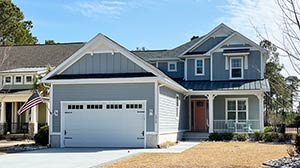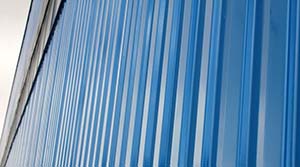Vinyl siding is excellent for homes. It is durable and energy efficient, making your home look great and comfortable. But you might wonder, “How long does vinyl siding last?”
You’re looking for peace of mind, knowing your home is wrapped in quality that stands the test of time. It’s an excellent choice for your home. It lasts longer than other materials.
According to the National Association of Home Builders, vinyl remains a popular siding choice in 26% of new home construction in 2020.
Let’s dive in and discover why it’s the top pick for homeowners who value style and substance.
- Durability: It resists moisture and doesn’t warp or rot like other materials.
- Maintenance: Imagine having more time to relax because your home’s siding doesn’t need constant care. A simple wash now and then keeps it looking new.
- Energy Efficiency: Your home stays cooler in the summer and warmer in the winter, which can help lower your energy bills.
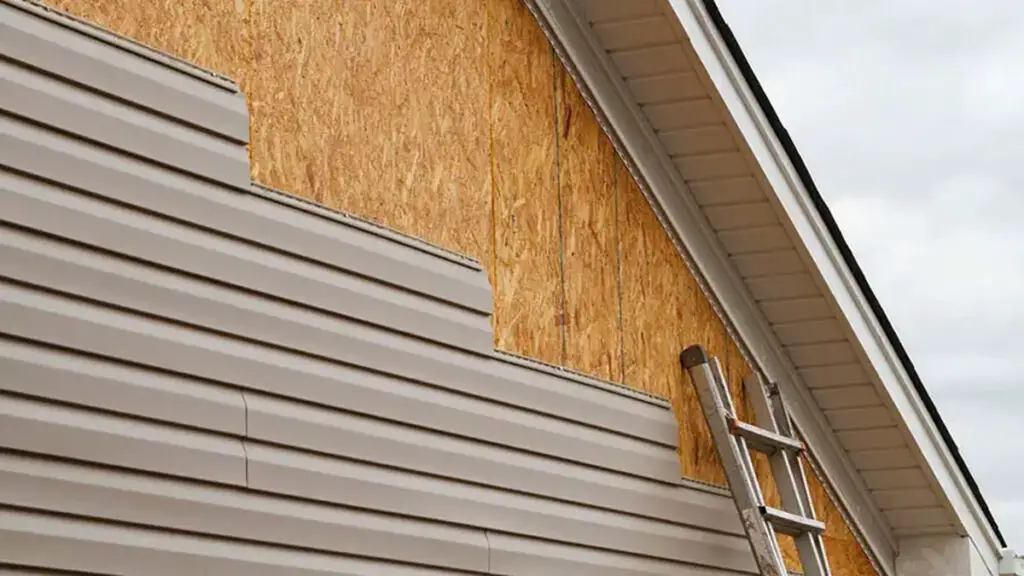
How Long Does Vinyl Siding Last?
Vinyl siding can last about 60 years. You can maximize the lifespan of vinyl siding with minimal maintenance. Regular cleaning and repairing loose panels ensures your home maintains its curb appeal.
You might be thinking, “What makes vinyl siding such a tough cookie?” Well, it’s all about the quality and science behind it. It is crafted to endure the ups and downs of weather without a hitch.
It laughs in the face of heavy rain and doesn’t flinch when the sun beats down. Plus, it’s a secret weapon against cold and heat, which helps your home stay comfy all year round.
The core material, polyvinyl chloride (PVC), gives vinyl panels lasting durability. Proper vinyl siding installation ensures the siding performs as a protective layer against weather and helps reduce utility bills.
- Weather Resistant: Vinyl stands strong against storms and is not fazed by harsh sun or biting cold. Extreme temperatures and extreme weather conditions can test the limits of vinyl siding. High-quality vinyl can withstand these challenges, often with a limited lifetime warranty.
- Moisture Resistant: Unlike wood, vinyl won’t absorb water so it won’t rot or swell.
- Impact Resistant: Kids playing ball or hail from a storm? Vinyl can take a hit and not show a dent.
And guess what? This isn’t us talking. Studies show vinyl siding is a top performer. Vinyl lasts long, and the Vinyl Siding Institute ensures you get the best.
So, when considering siding options, remember vinyl isn’t a pretty face. It’s a durable, reliable choice that keeps your home in prime condition for a long time.
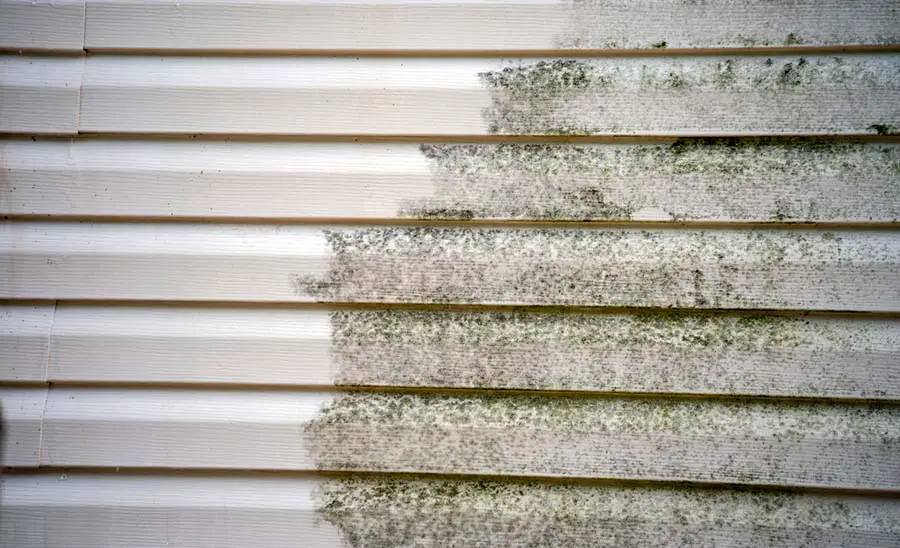
Maintenance and Care for Vinyl Siding
Taking care of your vinyl siding is a breeze. You don’t need to be an expert or spend your weekends on upkeep. With vinyl, you get more time to enjoy your home rather than work on it.
Routine Cleaning:
- Simple Washing: A gentle cleaning with water and a mild soap once or twice a year is all it takes to keep your siding looking fresh.
- No Harsh Chemicals Needed: Forget about strong cleaners. You can clean vinyl siding with a garden hose, a soft bristle brush, and a sprayer.
The basic maintenance of vinyl siding is straightforward. Adhering to the maintenance requirements can increase the lifespan of siding. It remains an energy-efficient and cost-effective option for homeowners.
Preventive Measures and Inspections:
- Regular Check-Ups: Take a walk around your home. Look for any signs of damage or areas needing a quick fix.
- Immediate Repairs: If you spot a loose panel or a crack, address it. Minor fixes can prevent bigger issues down the road.
You’re preserving your home’s beauty and functionality by following these simple steps. It’s like giving your house a health check-up that ensures it stays in peak condition.
And here’s a pro tip: if you’re unsure how to handle a repair, contact a professional. They can give your siding the care it needs without the guesswork.
Maintaining your vinyl siding is about smart homeownership. Keeping up with these easy tasks ensures your home remains a cozy haven for your family. Plus, you’re upholding the value of your investment, as well-maintained siding is a key factor in your home’s curb appeal.
Remember, vinyl siding is your partner in the long-term care of your home. It’s resilient, low-maintenance, and with a little attention, it will serve you well for many years.
While vinyl siding is low maintenance, some regular maintenance is necessary. Proper maintenance is critical to extending its lifespan. Using a garden hose to wash off dirt and debris with a garden hose can prevent excess moisture buildup.
The Pros and Cons of Vinyl Siding
Even if vinyl siding seems the right fit for you, being aware of possible issues and its strengths can be beneficial. Often, people only consider the obvious advantages of vinyl siding and miss the potential negatives.
| Vinyl Siding Pros | Vinyl Siding Cons |
|---|---|
| Highly durable | Can release toxins when heated |
| Wide variety of colors and patterns | Becomes brittle with age |
| Excellent insulation properties | Can hide rot and mold |
| Very low maintenance | Color fades over time |
| Quick and easy to install | Requires regular cleaning to maintain appearance |
Advantages of Vinyl Siding
The benefits of vinyl siding surpass the negatives, which explains its widespread use. The advantages vary depending on the manufacturer and how the siding is tailored to your home’s aesthetic.
- Durability: New vinyl siding is resilient. It bends and flexes, meeting your home’s needs without a fuss.
- Selection: Vinyl is better than wood and metal because it has more options for thickness, size, shape, and pattern.
- Insulation: Vinyl excels at insulation, blocking wind, water, and cold when properly installed.
- Maintenance: Vinyl siding is low-maintenance. You don’t have to paint it every year or worry about rust, even in harsh weather.
- Installation: Installing vinyl siding is much easier than wood siding. Vinyl can be easier to install for anyone with basic knowledge and online research.
Disadvantages of Vinyl Siding
Despite its many advantages, vinyl siding has its downsides. Keep these in mind, as they can influence the longevity and maintenance costs of your siding.
- Toxins: Vinyl can release toxins when heated, which might not affect humans but can impact local flora and fauna.
- Brittleness: Vinyl starts strong but can become brittle after a few years, leading to potential damage from impacts.
- Concealed Damage: Vinyl can conceal underlying water damage issues, which can be expensive to repair.
- Fading: Sunlight can bleach the color of vinyl siding. Homeowners paint vinyl siding and necessitate repainting every few years to maintain its appearance.
- Cleaning: Vinyl siding, especially lighter shades, shows dirt and stains easily. Requires more effort to keep clean.
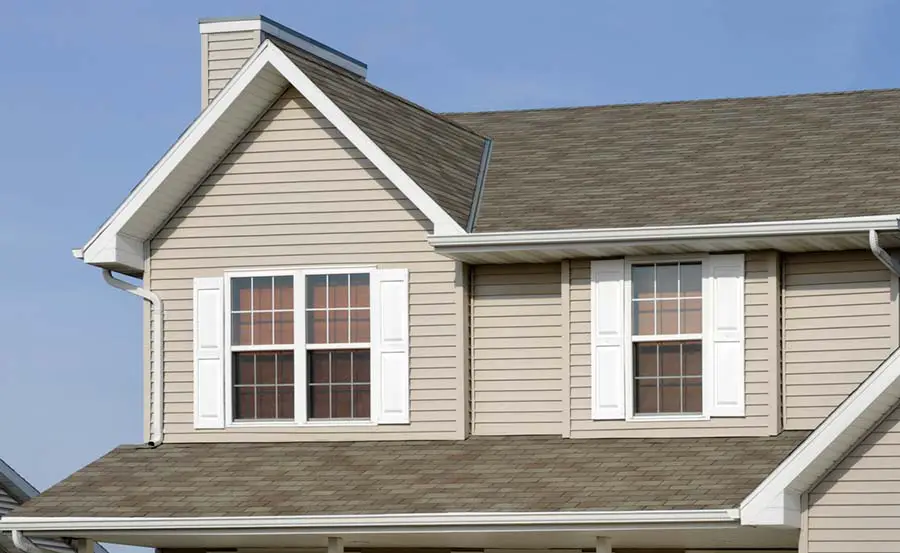
Comparison with Other Siding Materials
When you’re sizing up siding options, vinyl is the standout choice when you stack it up against the competition.
Wood Siding:
- Aesthetic Charm: Wood has a classic look, but it demands a lot of upkeep to stay beautiful. Cedar wood siding is a popular choice.
- High Maintenance: It needs regular painting and staining and is prone to rot and insect damage.
Aluminum Siding:
- Tough but Flawed: Aluminum won’t rot but can dent and fade over time.
- Noise Factor: It can be noisy during rain or hail and doesn’t offer much insulation.
Steel siding is a strong contender, known for its resistance to excess moisture and ability to withstand extreme weather conditions, though it may not offer the same range of colors as vinyl.
Stucco Siding:
- Climate Specific: Stucco is a durable option in dry climates, but it can crack and absorb moisture in wetter areas.
- Cracking Issues: It requires an expert application to avoid future problems.
Now, let’s circle back and see why vinyl is the superior choice:
- Low Maintenance: Vinyl wins with its minimal upkeep. No painting, staining, or sealing is necessary.
- Durability: It stands up to the elements, resists moisture, and maintains its color without fading.
- Energy Efficiency: Vinyl can come with insulated options that keep your home’s temperature stable and your energy bills in check.
Vinyl siding is a good investment because it lasts long, is easy to care for, and saves energy. Siding made of this material is unmatched in beauty, durability, and affordability, making it the best choice.
Consider their maintenance needs before deciding on fiber cement siding or cedar siding.
James Hardie’s fiber cement siding is durable and has a limited lifetime warranty. Cedar siding has a unique aesthetic but needs more upkeep.
James Hardie and other brands have made fiber cement siding popular. It’s a strong option with many colors and textures to enhance your home. It also provides a protective layer against the elements.
Life of Vinyl Siding: Installation and Quality Impact
The secret to unlocking the full potential lies in two key factors: the quality of the materials and the expertise of the installation. Here’s how these elements play a pivotal role in the lifespan of your siding:
Professional Installation:
- Precision Matters: Proper installation by a skilled professional ensures each panel is secure, allowing for the necessary expansion and contraction with temperature changes.
- Avoiding Mistakes: Incorrect installation can lead to issues like buckling and warping, so it is crucial to get it right the first time.
Quality of Materials:
- Top-Tier Vinyl: Investing in high-quality vinyl siding means getting materials more resistant to UV rays, impacts, and weathering.
- Warranty Assurance: High-quality options provide warranties, giving you peace of mind and protecting your investment.
When you install high-quality materials, you will protect and enhance the attractiveness of your home for many years. It’s like fitting your home with the best armor—it looks great and withstands the test of time.
Remember, cutting corners can cost you in the long run when it comes to vinyl siding. When you focus on quality and expert installation, your home will enjoy its durability and efficiency.
Why is Vinyl Siding Used So Often?
Vinyl siding is tough and often costs less than other options that might need replacing every few decades. Despite its downsides and risks, its benefits make it a popular and sensible choice for many homes.
People tend to pick the best siding that suits their needs, and vinyl is a favorite due to its versatility. Being a type of plastic, it can take on many shapes and sizes, boosting its popularity.
Flexibility and affordability have pushed aside older, pricier siding methods. People’s concerns about the environmental impact of vinyl have led to its decreased popularity. This is because there are now more eco-friendly options available.
Can You Replace a Section of Vinyl Siding?
The great thing about vinyl siding is its repairability. You can often remove damaged sections and slip in new ones. But, older homes might have larger siding pieces than newer ones.
Instead of replacing the whole siding, some recommend patching it. This way, the structure won’t weaken if it loses its stronger parts. Patching is wise if you plan to replace all the siding soon.
Patching lets your home stay protected and safe. Homeowners usually wait for calm weather before replacing damaged vinyl to avoid more harm.
What Is Between Vinyl Siding and the House?
You’ll find insulation and a waterproof seal between your home and the vinyl siding. These layers help your home stay dry and warm. Installing vinyl can take a few days if you damage these layers and must repair them.
Some have skipped adding insulation or sealant when installing vinyl siding, only to face leaks and water damage later. While vinyl is water-resistant, tiny gaps can let water seep through over time.
The sealant and insulation under the siding defend your home against harsh weather. It’s smart to check these layers when fixing or replacing your siding.
What Is the Best Color for Vinyl Siding?
Lighter colors, close to white, are best. They reflect sunlight, keeping the siding from getting too hot. Darker colors can absorb too much sun, melting the siding and causing heat damage.
If you choose dark colors, it can melt and become unstable in the summer heat. Lighter colors keep the siding cooler and more resistant to the sun’s heat.
FAQs on Vinyl Siding
You’ve got questions about when to replace vinyl siding, and we’ve got answers. Let’s tackle some of the most common curiosities homeowners have:
How often should vinyl siding be replaced?
Vinyl siding lasts around 60 years. It can protect your home for up to 100 years with proper care. You might never need to replace it in your lifetime!
Can vinyl siding withstand severe weather conditions?
Vinyl siding is like a trusty shield for your home. It’s built to withstand high winds, resist moisture, and handle heat and cold well.
What are the signs your vinyl siding needs to be replaced?
Keep an eye out for warping, cracking, or loose panels. These can be telltale signs your siding is ready for replacement.
How does vinyl siding impact home energy efficiency?
Vinyl siding can come with insulated options and act like a cozy blanket for your home. This means it can help keep your home warm in the winter and cool in the summer, which can lead to savings on your energy bills.
Conclusion
When improving your home, choosing vinyl siding is a smart decision. It lasts long, is easy to care for, and saves energy. Choosing the right protection for your home can last many years and keep it in great condition.
If you take good care of it and use quality materials, vinyl siding is a long-lasting investment for your home you will appreciate for many years.
Remember, your home is more than a building; it’s a sanctuary for you and your loved ones. Covering it with vinyl siding ensures it stays safe and beautiful for a long time.


